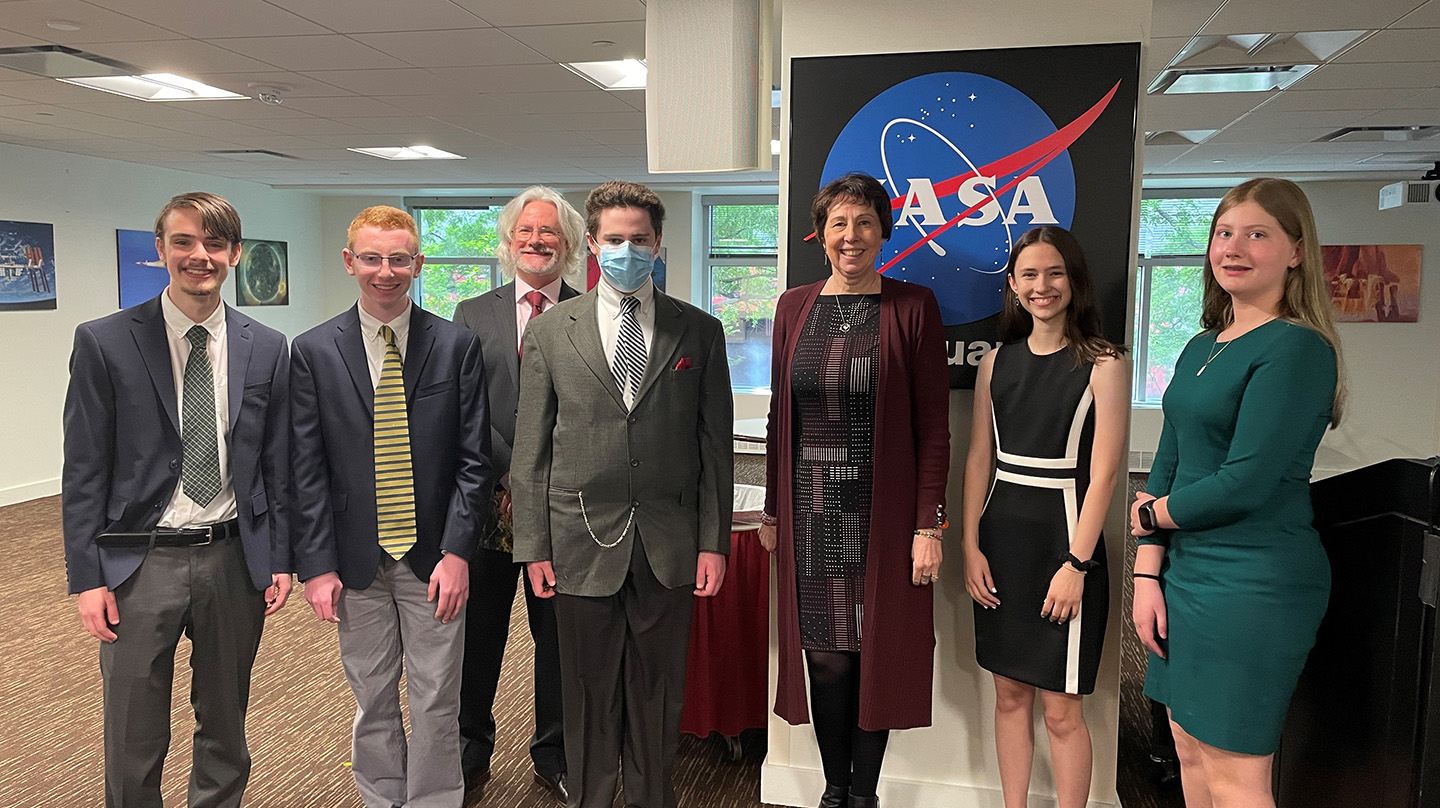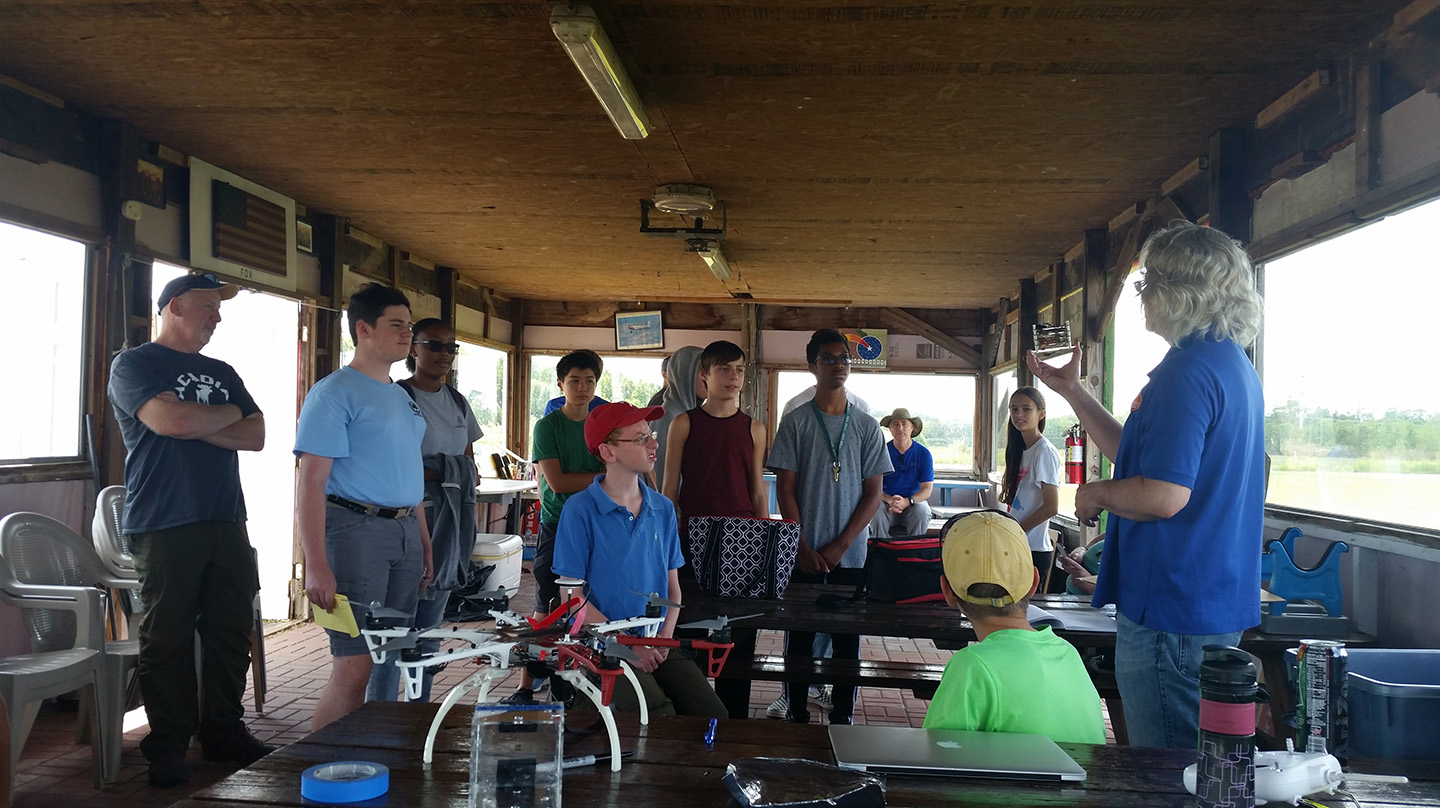
Dave Copeland is launching the next generation of engineers by teaching middle and high school students how to design and build a small satellite scheduled to go into orbit as early as late 2024.
Copeland, an engineer at the Johns Hopkins Applied Physics Laboratory in Laurel, Maryland, began doing seminars about CubeSats in a local makerspace in 2014. Those seminars grew, and in 2017 the Copelands and two other families founded SilverSat, a nonprofit educational organization for tweens and teens in the Silver Spring area. Now, with about 20 teens and a group of volunteer mentors on the team, the group’s unique, social-media-inspired project has been selected for a ride to space through NASA’s CubeSat Launch Initiative (CSLI).
“The kids came up with the concept, for a CubeSat that tweets,” Copeland said. “This was actually something they kicked around at the summer camp hosted by SilverSat.”

On the team’s first submission to the competitive CSLI, the tweeting satellite was selected as one of 14 small research satellites from nine states that will launch between 2022 and 2025. According to NASA, projects were proposed by educational institutions, nonprofit organizations and NASA centers. Each team must fund and build its own satellite as well as run its mission. NASA coordinates the trip to space on a supply mission and launches the satellites from the International Space Station. Once its CubeSat is in orbit, the SilverSat team will contact it from a ground station and connect it to the internet. The CubeSat will log into its own account on X (the platform formerly known as Twitter) and post pictures from space.
“It’s amazing to see what they can accomplish,” Copeland said. “I was extremely impressed and even surprised when we got selected on our first shot.”
The participants have had to learn everything it takes to create an engineering program from the bottom up, developing skills in mechanical engineering, electronics, computer programming and math. Like work on the satellite itself, the proposal for the CSLI was written by the students with help from their mentors. Any mentor contributions were annotated so NASA evaluators could see that the students did the majority of the work. The space agency was so impressed with the students that it invited them to present to the Science Mission Directorate at NASA Headquarters this past spring.
“These kids are incredibly smart,” said Cori Battista, a program manager in APL’s Space Exploration Sector. “They are asking questions and building [circuit] boards and testing them; things that, when I was their age, weren’t even in my wildest dreams.”
Battista, who serves as the deputy program manager for NASA’s Interstellar Mapping and Acceleration Probe mission, joined the project as a volunteer mentor in 2019 and teaches the students project management and risk management to keep the SilverSat delivery on track.
“They give me hope,” Battista said. “It’s just wonderful to see the students work together, to see how their minds work, and to see them lean in on very technical work. This is not easy stuff we’re doing. We’re building a CubeSat to go out into the harshest environment there is, to circle the Earth and to tweet pictures. They’re designing this. They’re doing it. The intelligence, the communication skills, the creativity, the ability to lean in, just the curiosity in the questions they ask; it all gives me hope for our future.”

With the project now on a deadline, it can be a struggle to balance the educational aspect of the program with the looming launch date. Copeland and other mentors have developed courses such as amateur radio and fundamentals of programming to maintain the learning environment and help onboard new team members.
“They get a couple of months of pretty intense teaching in electronics and coding and similar subjects, so they can start working with the teams,” Copeland said. “I would like to bring more people in to develop their education. Ultimately that is our goal. Getting to space is going to be great, but it’s the kids that are the goal.”
Copeland noted that the volunteer mentors are not teachers by trade and have had to develop materials and learn how to teach while working with their students. With the aim of putting the kids first, they have made the materials they develop available to other teams in the area, helping to build a stronger CubeSat STEM (science, technology, engineering and math) community.
As the young team members grow and move on to college, Copeland said he hopes many will continue to be part of that community.
“We had a couple of kids that went from middle school into the engineering program at Wheaton High School and from there on to college,” Copeland said. “Of the original cohort, most of them are freshmen this year or will start next year. Several of them I fully expect to see in the industry.
“These kids are the next generation of us,” he added.
The second SilverSat prototype is currently in development, and students will spend the upcoming academic year developing the full-flight model for delivery next fall.
For Media Inquiries
For all media inquiries, including permission to use images or video in our gallery, please contact:
Michael Buckley
All Media Resources

